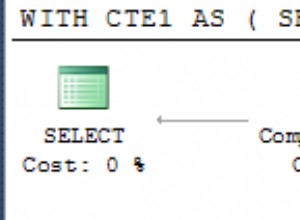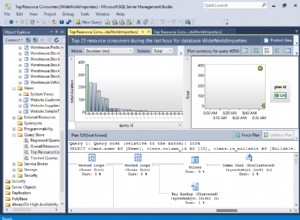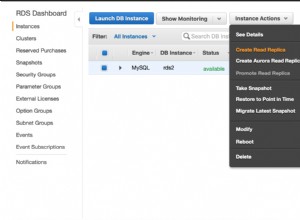Wydaje mi się, że problem nie tkwi w kodzie, który pokazujesz. Stworzyłem aplikację konsolową z tego, co umieściłeś powyżej i wyświetlała to, co było w bazie danych. Oto całość aplikacji:
namespace ExampleCF
{
public class Foo
{
public int FooId { get; set; }
public virtual List<Bar> Bars { get; set; }
}
public class Bar
{
public int BarId { get; set; }
public virtual Foo Foo { get; set; }
public int FooId { get; set; }
public virtual List<Employee> Employees { get; set; }
}
public class Employee
{
public int EmployeeId { get; set; }
public int BarId { get; set; }
public virtual Bar Bar { get; set; }
public int BankId { get; set; }
public virtual Bank Bank { get; set; }
public int PositionId { get; set; }
public virtual Position Position { get; set; }
public string Name { get; set; }
}
public class Bank
{
public int BankId { get; set; }
public string Name { get; set; }
}
public class Position
{
public int PositionId { get; set; }
public string Name { get; set; }
}
public class Model : DbContext
{
public DbSet<Foo> Foos { get; set; }
public DbSet<Bar> Bars { get; set; }
public DbSet<Employee> Employees { get; set; }
public DbSet<Bank> Banks { get; set; }
public DbSet<Position> Positions { get; set; }
public Model()
{
Configuration.LazyLoadingEnabled = false;
}
}
class Program
{
static void Main(string[] args)
{
Model context = new Model();
var exp = new Collection<Expression<Func<Foo, object>>>();
Foo foo = new Foo();
Bar bar = new Bar();
Employee emp = new Employee() { Name = "employee" };
Bank bank = new Bank() { Name = "bank" };
Position position = new Position() { Name = "position" };
foo.Bars = new List<Bar>();
foo.Bars.Add(bar);
bar.Employees = new List<Employee>();
bar.Employees.Add(emp);
emp.Position = position;
emp.Bank = bank;
context.Foos.Add(foo);
context.SaveChanges();
exp.Add(f => f.Bars.Select(b => b.Employees.Select(e => e.Position)));
exp.Add(f => f.Bars.Select(b => b.Employees.Select(e => e.Bank)));
DbSet<Foo> dbSet = context.Set<Foo>();
IQueryable<Foo> query = dbSet;
if (exp != null)
{
foreach (var incProp in exp)
{
query = query.Include(incProp);
}
}
var first = query.ToList().FirstOrDefault();
var firstEmp = first.Bars.First().Employees.First();
Console.WriteLine(String.Format("{0} | {1} | {2}", firstEmp.Name, firstEmp.Bank.Name, firstEmp.Position.Name));
}
}
}
dane wyjściowe:employee | bank |position
Czy jest coś jeszcze, co dodajesz do zapytania, czy może w jakiś sposób tworzysz typ anonimowy?




